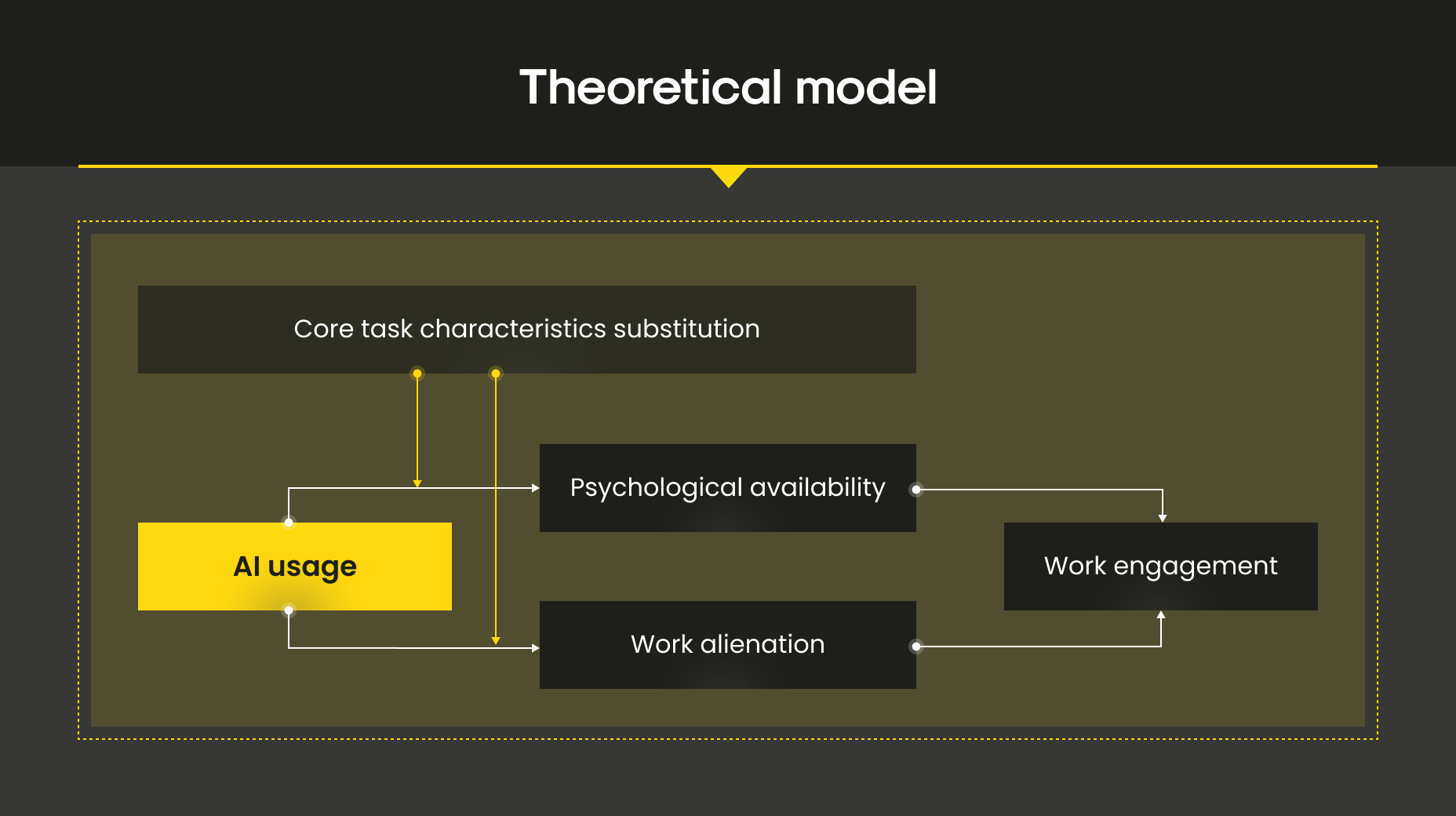Today AI feels less like a tool and more like a co-worker. But beneath the awe and automation lies a growing anxiety: are we trading human mastery for machine convenience? Are professionals becoming so reliant on AI that core skills (once honed through years of practice) are quietly slipping away?
This is the heart of the “skill erosion” scare, and it’s not just fearmongering. From surgeons double-checking diagnoses with algorithms to copywriters leaning on generative models, the question isn’t if AI is changing how we work, but whether it’s also dulling our edge. In this article, you’ll discover:
- Why AI’s convenience can come at the cost of professional mastery
- How skill erosion differs from past automation risks, and why it’s harder to detect
- Why convenience isn’t always capability, and how cognitive skills silently atrophy
- How to turn AI from a crutch into a cognitive gym: tactics for deliberate skill maintenance
- Why generational divides in AI usage are creating mismatched expectations in the workplace
- What companies can do to prevent “deskilling by default”, from red teaming to hybrid training
- What a human-centered approach to AI looks like, and how Mitrix helps implement it with future-proof solutions
Automation, then and now
The Microsoft “New Future of Work Report 2024“ warns that “if not carefully designed, generative AI tools can homogenize output, or potentially allow cognitive skills to erode”. At the same time, skill erosion isn’t a novel concern (think about technological revolutions), but AI is different. It doesn’t just take over repetitive tasks, but handles decisions, creativity, and even strategy.
Consider pilots. As autopilot systems improved, flight safety soared, but so did concerns about “automation complacency.” This paradox now echoes across industries: AI lifts performance in routine situations, but may leave humans less equipped when things go wrong.
The same applies to radiologists, financial analysts, and software engineers who now lean on machine-generated insights or AI copilots. Accuracy improves, well, until it doesn’t. And when it doesn’t, are humans still sharp enough to spot the flaw?
The comfort trap: convenience vs. capability
It’s common knowledge: AI makes things easier. Why struggle with phrasing when ChatGPT can rewrite your email in three tones? Why do manual data analysis when a Copilot can chart insights with a prompt?
But convenience has a price. The more we outsource critical thinking, creativity, or problem-solving, the less we practice them. Like muscles, cognitive skills atrophy when not exercised.

A developer who copies AI-generated code without questioning logic may never learn to debug complex systems. Over time, users can become glorified editors, polishing the output, but not understanding how it was created. This erosion isn’t visible overnight: it’s silent, and that’s what makes it dangerous.
Rethinking AI as a learning tool
Not all is doom and decay. Just like calculators didn’t make us bad at math (but freed us to tackle harder problems), AI can be a skill expander if used intentionally.
The key is active engagement. Rather than passively accepting AI outputs, professionals should challenge, modify, and learn from them. As the user ednite put it on Hacker News: “So yeah, for me AI isn’t a replacement. It’s a power tool, and eventually, maybe a great coding partner. But you still need to know what you’re doing, or at least understand enough to check its work”.
In education, this shift is already underway. Students using AI for assignments are being taught to annotate, critique, and compare outputs with their own drafts. Instead of banning AI, instructors encourage its use in a way that builds (not bypasses) cognitive skills. Skill erosion isn’t inevitable. It depends on how we position AI: as a crutch that replaces thinking, or a catalyst that accelerates learning.
Challenge
Companies often chase productivity gains from AI without asking what long-term capabilities they’re giving up. It’s easy to automate workflows and cut training budgets. But what happens when the AI fails, the model is deprecated, or, say, the vendor folds?
A classic example: customer support agents using AI chat assistants. In the short term, resolution times improve. But over time, agents may stop developing empathy, conflict-resolution skills, or domain expertise, leaving a knowledge vacuum when AI falters.
To counter this, organizations need AI-aware workforce strategies. That includes:
- Skills audits. Identifying which competencies are being underused or underdeveloped due to AI.
- Hybrid training. Teaching employees how to collaborate with AI while deepening domain knowledge.
- Red team scenarios. Simulating AI system failures to test human fallback readiness.
The goal is to prevent “deskilling by default.” Just as cybersecurity includes disaster recovery plans, AI integration must include skill resilience planning.
Professions at risk (and what to do about it)
As AI tools become everyday assistants across industries, a quiet but growing concern is creeping in: are we outsourcing not just our tasks, but our thinking? While AI boosts productivity and simplifies complex workflows, it can also chip away at the core skills that once defined professional mastery. In some roles, this erosion is subtle, barely noticeable until it becomes a performance gap. In others, it’s more immediate, visible in the form of generic content, shallow analysis, or buggy code. Certain domains are more vulnerable to skill erosion than others:
- Creative roles. Writers, designers, and marketers may become over-reliant on AI-generated drafts, leading to homogenized output and loss of personal style.
- Analytical roles. Financial analysts and strategists risk becoming interpreters of AI dashboards, not originators of insight.
- Technical roles. Developers using AI code generators may miss edge cases or fail to grasp underlying logic.
How to defend against this? Three tactics:
- Deliberate practice. Set time aside for tasks without AI assistance. Think of it as a gym session for your brain.
- Critical comparison. Regularly compare your output with AI-generated results to spot patterns, gaps, or overreliance.
- Reverse engineering. Try to recreate or deconstruct AI-generated solutions to understand the reasoning behind them.
Key takeaway
To guard against skill erosion in the age of AI, professionals must stay actively engaged with their craft, practicing without shortcuts, questioning machine-generated output, and understanding the logic behind AI solutions.
Generational differences: the problem
There’s also an emerging gap between professionals who learned their craft pre-AI and those entering the workforce with AI as default. Veterans may lament a decline in fundamentals, while newcomers argue that adapting to AI is the new fundamental.
Who’s right? In fact, both. The danger is in AI dependency without understanding. Young professionals who use AI tools without ever learning the “why” behind decisions risk becoming shallow generalists. But those who combine AI skills with foundational training can become hyper-competent hybrids, equally capable of prompting and problem-solving.
Educational systems and employers must foster dual literacy: AI fluency and traditional expertise. Anything less is an incomplete professional toolkit.
Key takeaway
The future belongs to professionals who blend AI fluency with deep foundational knowledge. Relying solely on AI creates shallow skillsets, but combining smart tool use with traditional expertise builds versatile, future-proof talent. Education and workplaces must nurture both.
The new skillset: adaptability and judgment
In a world increasingly shaped by AI, one of the most valuable human skills is judgment, or the ability to evaluate nuance, context, and consequence in ways machines cannot. While AI excels at pattern recognition, it struggles with ambiguity, ethics, and unforeseen edge cases. This is where adaptable professionals thrive.
Modern careers won’t just demand technical competence or AI fluency – they’ll require people who can bridge the gap between automation and understanding. That means interpreting AI outputs with a critical eye, knowing when to override a recommendation, and having the confidence to ask, “Is this right for our users, our values, or our long-term goals?”
Moreover, the ability to learn continuously, adapt workflows, and collaborate across human-machine boundaries will become central to professional resilience. Soft skills like communication, empathy, and contextual awareness won’t be sidelined. Instead, they’ll be the differentiators in increasingly automated environments.
The edge we fear losing isn’t just technical mastery. It’s the combination of insight, curiosity, and responsibility. Those who embrace AI as a partner (but not a substitute) will define the next generation of excellence.
How Mitrix can help
Here at Mitrix, we offer AI/ML and generative AI development services to help businesses move faster, work smarter, and deliver more value. At the same time, we understand the growing concern around skill erosion in the age of AI.
That’s why we build human-centered AI systems designed to amplify, not replace, human capability. Our approach balances automation with upskilling, ensuring that your team remains in the loop and at the top of their game.
Whether you’re integrating AI into your workflows for the first time or scaling existing models across teams, Mitrix engineers work closely with your stakeholders to identify areas where AI can augment decision-making rather than take it over.
From smart copilots and task automation to decision-support systems and internal training tools, we help future-proof your organization without sacrificing the edge that comes from real human expertise. Our engineers bring expertise across industries and technologies to design intelligent systems that fit your exact needs with measurable impact. Contact us today!
Wrapping up
The “skill erosion” scare isn’t fiction: it’s a plausible outcome if we adopt AI uncritically. Treating AI as a thinking replacement rather than a thinking partner is what dulls our edge. The challenge for individuals and organizations is learning how to stay sharp when AI handles the heavy lifting.
The future of AI isn’t about replacing professionals, but reshaping how they work, blending technology with expertise to unlock new forms of legal insight and value. The tools may change, but the need for human skill, judgment, and learning will always remain. We’re not losing our edge, unless we choose to put it down.


